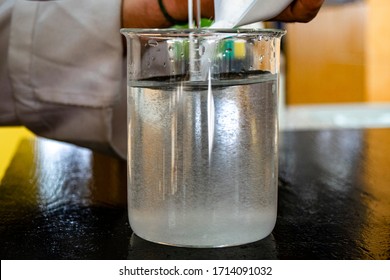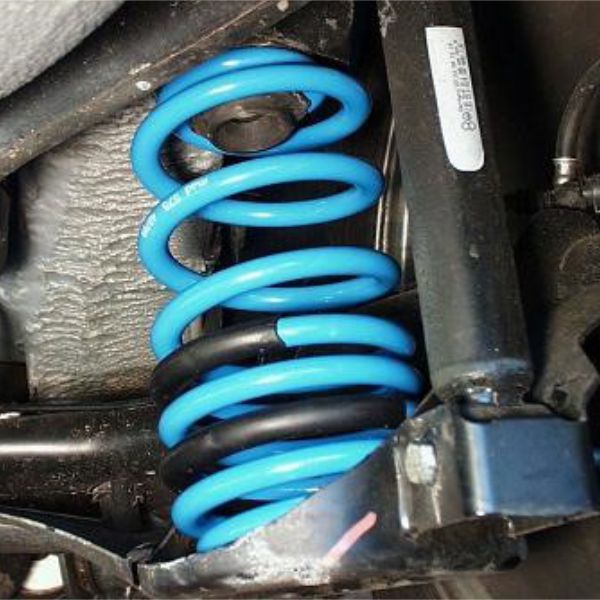Main Difference – Solution vs Suspension
Solutions and suspensions are both considered as mixtures. The key difference between solution and suspension is their particle size. Particles in a solution are much smaller than that of suspensions. Due to this difference between solute particles and suspension particles, there are distinct differences in the two systems. However, the components of both the systems are not chemically bonded to each other and can be separated based on their physical properties such as size, solubility and density.
Due: Each of the following mixtures is either a solution, a suspension, or a colloid. Decide what type of mixture each description represents. 1) A chef is making salad dressing. They pour oil, vinegar, and a beaten egg yolk into a container and whisk them together. The oil and vinegar are each transparent, but the dressing is not.
Suspension: Suspension doesn’t mix together entirely, or if they do, the particles may become unmixed and fall to the bottom. Dispersed particles or solute in suspension are larger than solutes of solution. The diameter os these particles is of the order 2 0 0 0 A ˚ or more. Example- sand stirred ito water, soot in the air. A solution is a homogenous mixture of a solute dissolved in a solvent, such as salt in water. In that instance if the salt is dissolved in solution of water, there is chemical bonding. See full list on pediaa.com. A suspension is a heterogeneous mixture in which the solute particles do not dissolve, but get suspended throughout the bulk of the solvent, left floating around freely in the medium. The internal phase (solid) is dispersed throughout the external phase (fluid) through mechanical agitation, with the use of certain excipients or suspending agents.
This article explains,
1. What is a Solution?
– Definition, Characteristics, Examples
2. What is a Suspension?
– Definition, Characteristics, Examples
3. What is the difference between Solution and Suspension?
What is a Solution – Definition, Characteristics, Examples
A solution is a homogeneous mixture of two substances. The most abundant component of the system is known as the solvent whereas solute is the substance which is dissolved in the solution. The solute particles are in either atomic or molecular level. The size of solute particles is usually < 1 nm. Solvents and solutes are in the same phase and cannot be distinguished even under a light microscope. The homogeneity of solutions arises from the fact that the solutes are evenly distributed in the solvent. The components of a solution system are comparatively difficult to be separated than that of suspensions or colloids.
Ex: NaCl is a white solid. After dissolving it in water, you cannot see the white solid anymore. Instead, you will only see the transparent solution.
Solutions are transparent due to the small size of solute particles, which prevent the reflection or scattering of light. Solutions, at a given temperature, are stable and remain homogeneous without particles settling.
The formation of solutions depends on the affinity of the solutes to the solvent. Polar solutes dissolve only in polar solvents and non-polar solutes dissolve only in non-polar solvents. Water is the most known polar solvent. Polar solutes such as salt, sugar, KCl are dissolved easily. Most organic solvents such as benzene, hexane and petroleum ether are non-polar. Iodine and Styrofoam can be given as examples of non-polar solvents.
Some examples of solutions can be given as follows;
Gas in Gas: Air
Gas in liquid: Soda
Liquid in liquid: Water and alcohol
Solid in liquid: NaCl in water
Liquid in solids: Mercury amalgam, mercury in silver
Solids in solids: Alloys, steel, brass, bronze
What is a Suspension – Definition, Characteristics, Examples
Particles of suspensions are often greater than 1000 nm. Therefore suspensions are heterogeneous. They are not of one phase. When soil is mixed with water, large soil particles can be clearly seen and distinguished from water. This system is a typical suspension. Particles in a suspension tend to travel through the medium and undergo sedimentation with time. Due to the large sizes of particles, they can be easily separated by filtration. Suspensions are cloudy, unlike solutions due to bigger particle size. Light is scattered or reflected by these particles.
Most known suspensions are formed by suspending solid particles in liquids (ex-: muddy water, CaCO3 in water). However, there can be incidents of liquid-liquid suspensions (mercury in oil/water), solid-gas suspensions (soot in air). Emulsions are a form of suspensions where two immiscible liquids are shaken together to form a cloudy mixture. When this is let to stand, the separation of two liquid layers is easily seen. Oil and water together is one fine example for emulsions.
Some oral medicines are available as suspensions. For example, milk of magnesia which is used for antacid treatments is a suspension of magnesium hydroxide.
Suspensions are not of one phase. There can be a phase separation if the system is left to stand for some time. Hence, these are not stable.



Difference Between Solution and Suspension
Composition
Solution:Solutions are homogeneous ( the composition is the same throughout). Solute particles are dissolved in a solvent and are evenly dispersed.
Suspension: Supensions are heterogeneous. Particles can be visibly distinguished and particle dispersion is not even.
Particle Size
Solution:Particle size is <1 nm. They are comparatively very small and either of an atomic or molecular level. They cannot be seen even under a light microscope.
Suspension: Particle size is >1000 nm. Particles are comparatively very large and can be seen by naked eye. They can be present as coagulations.
Properties

Solution:Solutes and the solvent are in the same phase.
Suspension:Suspended particles can be in a different phase than the medium.
Appearance
Solution: Solutions are transparent. There is no scattering of light.
Suspension: Suspensions are cloudy. Light can be reflected or scattered.
Examples
Solution: Examples include NaCl in water and sugar in water.
Suspension: Examples include milk of magnesia, soot in the air.
Reference List:
Image Courtesy:
Suspension Or Solution For Otic
“Chemical precipitation diagram” By Vectorized by ZooFari; raster by ZabMilenko – Own work, Chemical precipitation diagram.png (Public Domain) via Commons Wikimedia
Is Tea A Suspension Or Solution
“652201” (Public Domain) via Pixabay